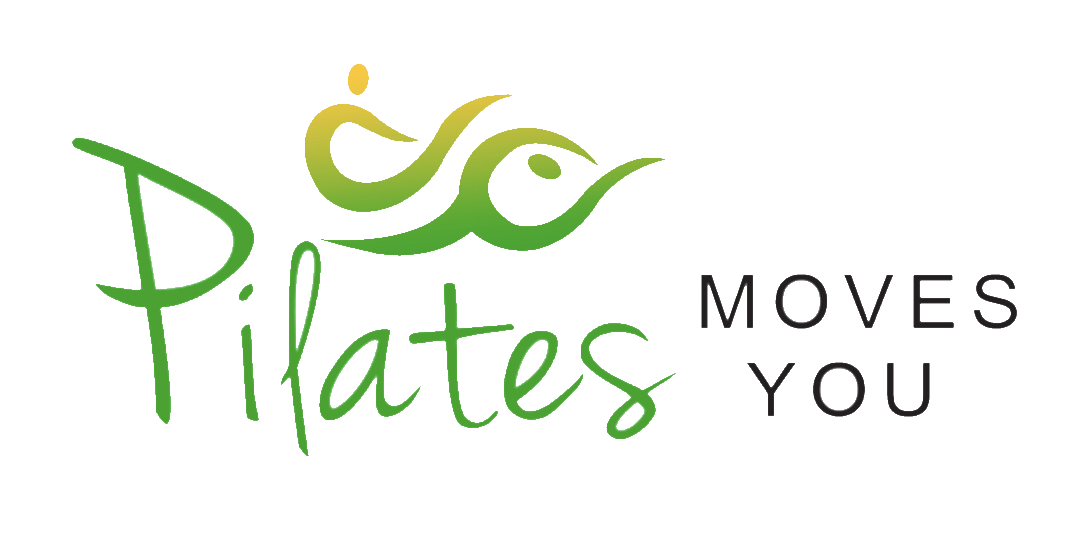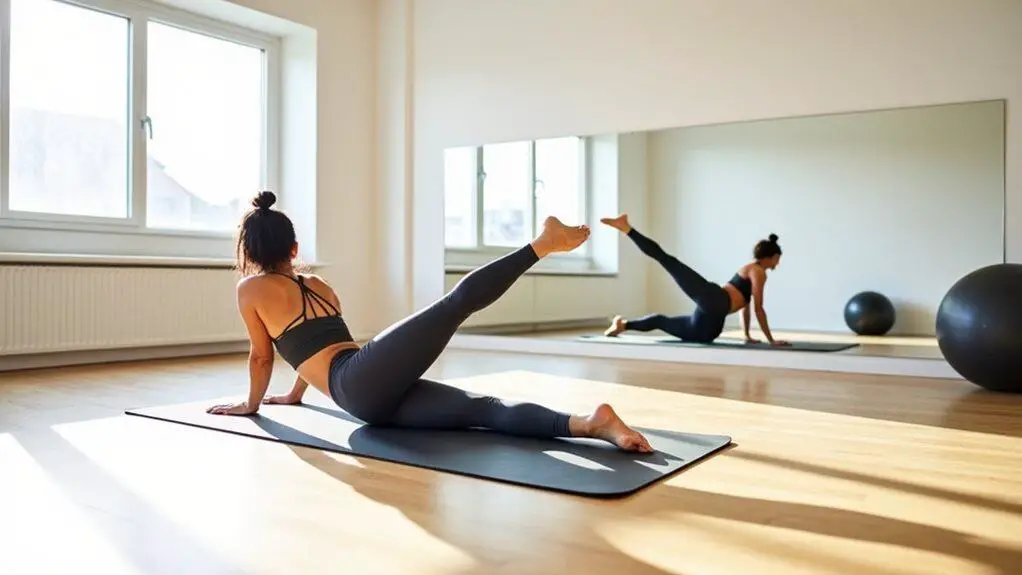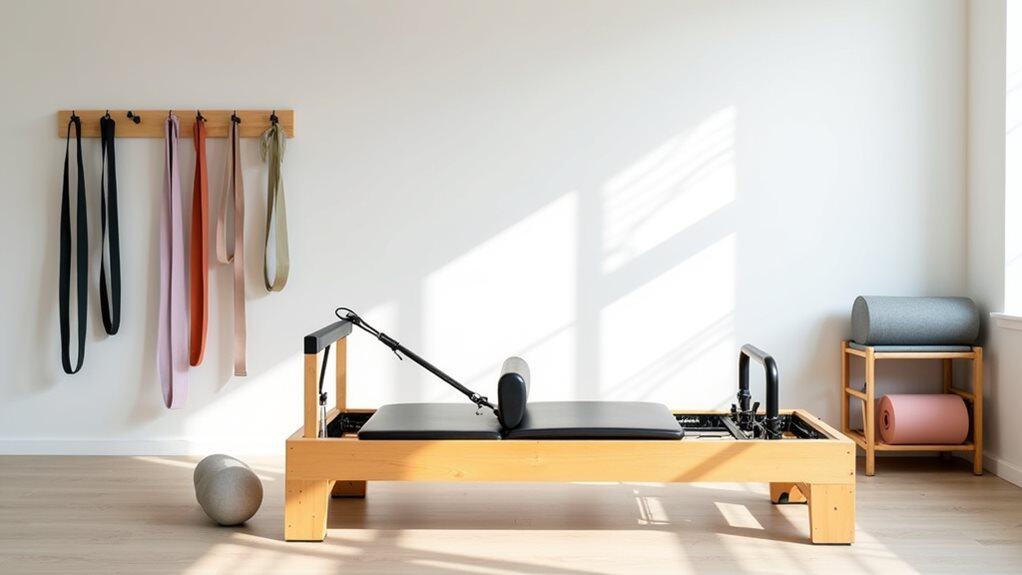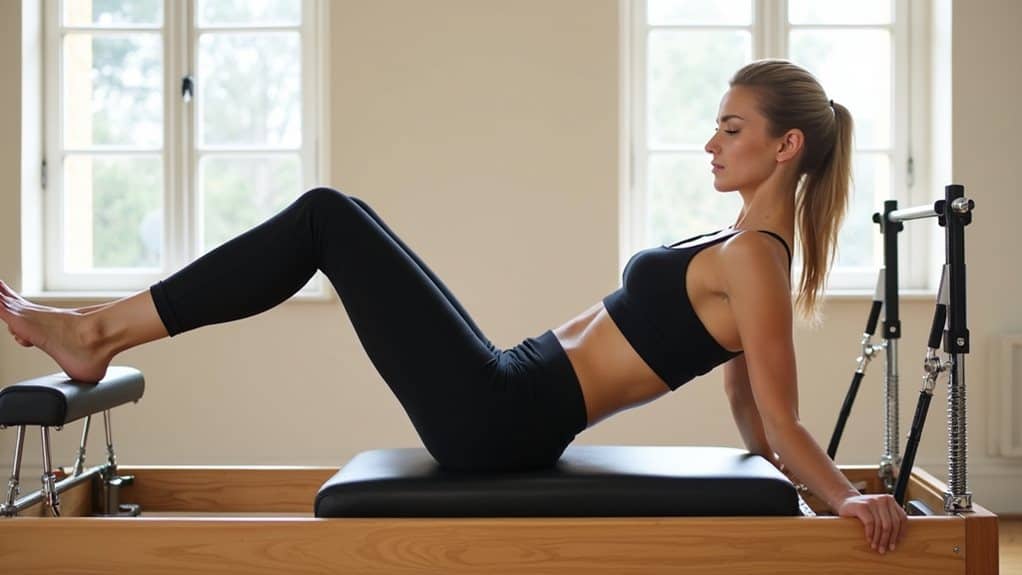The delicate artistry of a golf swing and the core strength of Pilates may seem worlds apart but delve a little deeper, and one discovers a harmonious blend of finesse and power. Merging these two disciplines can reveal the intricacies of balance, movement, and focus.
Pilates strengthens core muscles, improves flexibility, and enhances balance—key elements in a golf swing. By practicing Pilates, golfers can achieve better posture, more powerful rotation, and increased swing consistency, leading to improved golf performance and reduced risk of injury.
Dive into the unexpected synergy between the green and the mat, and explore how their union can elevate your game in ways you never imagined.
The Anatomy of a Golf Swing: Understanding the Basics
The golf swing, often seen as a simple motion, is a complex sequence of coordinated movements that engage multiple muscle groups, requiring strength, flexibility, balance, and timing.
At its core, a golf swing consists of the backswing, where the golfer coils; the downswing, where power is generated, followed by the impact with the ball; and the follow-through. Each phase relies on the precision and synchronization of the hips, spine, shoulders, arms, and wrists, combined with the golfer’s stance and grip on the club.
To truly understand the anatomy of a golf swing, one must appreciate the kinetic chain involved. It’s akin to a whip: the energy starts from the feet, travels up through the legs, into the hips, then the torso, and finally out through the arms and club. This energy flow is optimized when there’s a balance of strength and flexibility throughout the body.
A strong link in this chain can lead to consistency in the swing and increased power and accuracy. This is where the importance of a holistic approach to training, like incorporating Pilates, becomes evident, ensuring every part of this kinetic chain is functioning at its peak.
Pilates Exercises for Golfers: A Starter Guide
- The Saw:
- Purpose: Increases rotational flexibility and targets oblique muscles.
- How-to: Sit tall with legs and extended arms out. Twist the torso, reaching one hand towards the opposite foot. Repeat on the other side.
- Pelvic Tilt:
- Purpose: Strengthens the core and improves pelvic stability.
- How-to: Lie on your back, knees bent. Engage the core, tilting the pelvis upwards. Hold, then release.
- Single Leg Circle:
- Purpose: Enhances hip mobility and stability.
- How-to: Lie on the back, one leg extended up. Circle the leg in a controlled manner, and switch legs.
- Spine Stretch Forward:
- Purpose: Promotes spinal flexibility, which is critical for a smooth swing.
- How-to: Sit tall, legs apart. Reach forward with a flat back, then curl down. Roll back up.
- The Teaser:
- Purpose: Engages the whole core, improving balance and stability.
- How-to: Lie on your back, legs elevated at 45 degrees. Reach arms forward and lift the upper body off the floor—balance on sit bones.
- Side Kick Series:
- Purpose: Strengthens the hips and obliques, enhancing rotational power.
- How-to: Lie on one side, legs at an angle. Lift the top leg and perform various kicks, keeping the torso stable.
- Swan Dive:
- Purpose: Strengthens back muscles, aiding in a powerful backswing.
- How-to: Lie face down, hands under shoulders. Extend the spine and lift the chest off the floor, lengthening the body.
- Shoulder Bridge:
- Purpose: Engages glutes, hamstrings, and lower back. Useful for a stable stance.
- How-to: Lie on your back, knees bent. Lift hips into a bridge, hold, then roll the spine down.
Incorporating these exercises into a routine can give golfers increased strength, flexibility, and balance, all vital for perfecting the golf swing. Remember, it’s essential to maintain proper form in both Pilates and golf to reap maximum benefits and prevent injury.
Core Strength: The Powerhouse of Both Pilates and Golf
In the intricate dance of physical disciplines, Pilates and golf spotlight one crucial element: core strength. Often misconstrued as just the abdominal muscles, the core is a complex network that includes the lower back, pelvis, hips, and abdomen, acting as the body’s central stabilizer and force generator.
For Pilates enthusiasts, the core is the focal point of almost every movement, serving as the foundation for balance, stability, and control. Whether mat-based or equipment-driven, the exercises are meticulously crafted to challenge and strengthen this central powerhouse, ensuring functional fitness and graceful movement.
In the world of golf, the core’s significance is equally pronounced. While a golf swing’s aesthetics might emphasize the club’s motion or arm’s trajectory, the swing’s true power and consistency emanate from a robust and engaged core. As golfers coil and uncoil during their swing, the core allows for the seamless transfer of energy from the ground, through the body, and into the ball.
A stronger core translates to increased rotational power, a stable base, and a more consistent swing, improving accuracy and distance. Thus, for golfers aiming to elevate their game or Pilates practitioners seeking functional strength, the core stands undisputed as the epicenter of power and performance.
Flexibility and Rotation: Improving Your Swing Arc
In golf, the beauty and effectiveness of a swing are often directly related to the arc it describes. A wider, smoother arc typically means more power and distance, as the club has a longer path to accelerate before meeting the ball.
The secret to achieving this coveted swing arc lies in the arms or the club’s length and predominantly in the golfer’s flexibility and rotation capabilities. The greater a golfer’s rotational flexibility, especially in the spine and hips, the more profound and efficient the swing arc becomes.
Pilates emphasizing enhancing flexibility and promoting controlled rotational movements, offers an avenue to improve this aspect of the golf swing. The exercises in Pilates focus on elongating muscles and improving joint mobility, particularly in the areas crucial for a golfer, such as the thoracic spine, hips, and shoulders.
As these areas become more flexible and capable of a broader range of motion, golfers can turn more freely and extensively during their backswing and follow-through. The result? A swing arc that’s not only wider but also more controlled, leading to longer and more accurate shots. As a bonus, this improved flexibility also aids in reducing the risk of strain and injury, making it a win-win for every golfer.
Balancing Acts: How Pilates Enhances Stability in Golfers
Balance, an overlooked aspect of the golf game, is paramount in achieving a consistent and powerful swing. A golfer’s stance, weight distribution, and ability to maintain a stable base throughout their swing influence the ball’s trajectory, speed, and accuracy.
Every swing, putt, or chip demands a level of equilibrium, ensuring that the golfer remains grounded and centered, irrespective of the terrain or shot’s complexity. In the realm of balance and stability, Pilates offers immense value to the golfer.
Pilates, inherently focused on controlled movements and body awareness, naturally cultivates a sense of balance in its practitioners. Through various exercises, from the simplest of mat routines to the more complex reformer workouts, individuals learn to engage and stabilize their core muscles, the body’s intrinsic balance center.
Pilates emphasizes unilateral exercises that challenge one side of the body at a time, identifying and rectifying imbalances that often go unnoticed.
For golfers, this enhanced stability means a sturdier stance, better weight transfer, and a reduced risk of over-rotation or swaying during the swing.
With Pilates as a foundational practice, golfers can find themselves more stable on the green and more agile and adaptive, ready to face any shot with poise and precision.
Posture Perfection: Standing Tall for a Better Swing
The starting position of any athletic endeavor often dictates the motion’s subsequent effectiveness and precision. In golf, this foundational principle is evident in a player’s posture. How a golfer stands, aligns their spine, positions their shoulders, and places their feet can profoundly impact the swing’s outcome.
A hunched back, misaligned spine, or uneven weight distribution can distort the swing’s path, leading to consistency and inefficiencies. In contrast, an upright, balanced posture can be the keystone for a fluid, powerful, and accurate swing.
Enter Pilates, a discipline renowned for its emphasis on alignment, body awareness, and, most notably, posture perfection.
Pilates exercises consistently encourage practitioners to elongate their spines, engage their core muscles, and be acutely aware of their body’s alignment from head to toe.
Over time, these practices cultivate a natural, upright posture on and off the mat. Integrating Pilates into their training regimen for golfers can lead to transformative results.
With an improved posture, golfers can achieve a more optimal swing plane, better weight transfer, and increased rotational efficiency.
The ripple effect of these enhancements is evident in longer drives, sharper iron shots, and a heightened sense of confidence every time they address the ball. In essence, by standing tall and embracing the principles of Pilates, golfers set themselves up for success, one swing at a time.
Sources:
https://complete-pilates.co.uk/golf-swing/
https://www.studiopilates.com/improve-your-golf-swing/
https://pilatesequilibrium.com/blog/posts/improving-your-golf-swing-through-pilates/




